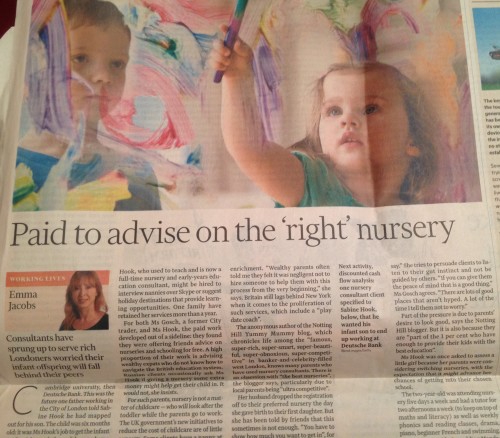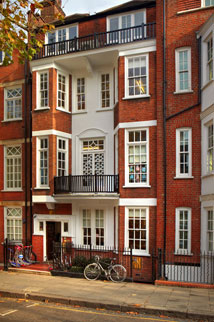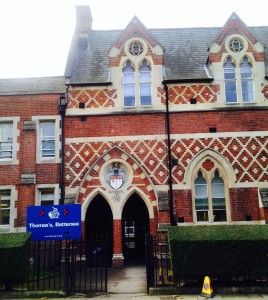Advice and insights for the 2016 exams
by guest author Faisal Nasim, tutor and director of Exampapersplus.co.uk (see further info and bio below)
The purpose of this article is to highlight some of the topics and styles that came up last year as well as to offer advice on how best to prepare. The article is relevant to anyone considering the 7+ or 8+ for their child, but it is especially relevant for those doing so in London for the following schools:
English
Examination formats can differ but the core areas tested are similar across the board: Comprehension, composition, spelling, grammar and punctuation.
Generally speaking, comprehension answers are expected in full sentences though there are some schools that partially test in multiple-choice format. One comprehension passage at 7+ from one of the harder schools came from ‘The HodgeHeg’ by Dick King-Smith, so that should give you an idea of the level expected. Comprehensions vary greatly in difficulty and length. Some are not designed to be finished.
For composition, the format could be an informal letter, diary entry, news report or descriptive writing. Descriptive writing can be a continuation of the comprehension passage. If this is the case, then there is likely to be another option too. Unless the child has fully understood the comprehension text, the other option is usually a better choice. One school set the task of responding to a letter from Peter Pan. Another example was to write a letter to a foreigner explaining the sports that you like to play. One school asked children to draw a diagram of three things that were important in their life and then write a short paragraph on each to explain why they were important. Some schools like to use image-based prompts such as cartoons or storyboards. Other common questions include telling a story from the perspective of a certain character or writing a story that involves certain objects or characters, such as a key or a witch.
Linked to this, one school set a task entitled ‘All about me’ where students were asked to draw a picture of their interests and then label them. This information was then likely fed into interviews. Another school asked students to draw a self-portrait.
Spelling, grammar and punctuation are tested via the comprehension and composition but are also often examined separately. This could be via a spelling test, dictation, word search or short exercises where spelling and punctuation errors had to be identified and corrected.
Advice for the English section
For those struggling with comprehension, it often helps to think of it as a puzzle, where all the clues are contained within the text. The harder ones tend to include at least a few words that students are not necessarily expected to know but rather to make an educated guess at from the context.
Many workbooks that parents use to practise comprehension do not leave enough lines for children to respond in full sentences. In this case, ask your child to write their responses on a separate piece of lined paper.
Quality is better than quantity when it comes to composition. 15 well-written lines with good spelling, handwriting, punctuation and wide-ranging vocabulary will usually score higher than most. Mixing up tenses is a common error that is easily avoided. Whilst you should definitely not encourage your child to memorise stories, it is useful for them to have practised using a few ‘power-words’ in different contexts and perhaps a simile and metaphor that can be applied easily in different stories. In general, the rule of often applying an adjective to each noun and an adverb to each verb tends to help too. It is very important that they read the instructions carefully and are writing in the correct tense, persona and perspective required.
Mathematics
Maths sections tend to be challenging and are often designed to make it very difficult to finish. Mental Arithmetic is occasionally also tested in verbal form so this is worth preparing for. Some schools allow working out in this section and others do not, applying short time limits before moving on to the next question. Magic squares seemed to be popular this year.
The first part of the paper will usually focus on basic arithmetic skills before more complicated concepts are tested. At 7+ this year, one school asked, ‘What is half of 9?’. Most exams will also feature a number of progressively challenging word problems that require two or three steps of calculation. There will also likely be a ‘stretch’ question or two which most will not be able to solve. For example, at 8+ this year, one school asked boys to calculate the square root of 9.
Advice for the Mathematics section
Having a solid grasp of times tables is key to doing well in 7+ and 8+ Maths. It will allow students to work quickly and confidently through the earlier parts of the paper and equip them with the tools to approach the harder questions later on. Whilst many schools will claim that only the 2, 5 and 10 times tables are tested at 7+, they often go beyond this in the exam. For example, the first question last year on one 7+ paper was 7 x 8.
Always show working, especially for word problems. Even if the solution is incorrect, students can often score many of the marks available if they can show they were on the right track with their method. There will almost always be questions covering money, fractions, time and sequences so these are all worth preparing for.
Reasoning
Not all schools test this, so do check individually. Some may test Verbal Reasoning but not Non-Verbal Reasoning. Verbal Reasoning may test analogies. For example, last year one 8+ question asked, ‘France is to Paris as Spain is to…’. Other questions may test the range of a student’s vocabulary by asking them to identify synonyms and antonyms. Non-Verbal Reasoning is most often based on symbols and shapes rather than pictures. Questions such as finding the odd one out or the next shape in a sequence are common.
Advice for the Reasoning section
Reasoning tends to fall into defined and limited question types and these can be easily practised. There are defined techniques and methods that allow students to approach questions systematically and quickly improve their scores. It’s definitely worth preparing for this section as students may not have had exposure to these types of questions before.
Interviews and Assessment Days
Interviews and assessment days are usually held a week or so after the written examination. In this case, schools tend to invite back around two candidates for every available space. Some schools conduct the interview on the same day as the examination whilst one conducts the interview a month before.
Interviews are often conducted in small groups of around five. One common exercise is to read a short text aloud and then the children are asked questions to test understanding. Some maths problems and puzzles also feature a drawing task such as producing a sketch of a building. At 8+, one school asked students to write a poem. Students are often taken to the library to work on small projects. The focus of the interview can vary from child to child. For example, if they did less well on the maths examination, they may be asked more arithmetic questions in the interview.
One-on-one interviews tend to focus on the obvious things such as hobbies and interests. Some schools interview the parents too. This tends to be rather informal, asking why you chose the school and what your child does after school, for example.
Some schools run specific group assessment days. These tend to be fun activities such as creating stories and reading them out to the group, cutting out numbers from sheets and making charts, playing snakes and ladders and maths games. Sometimes, there will also be time allocated for outdoor play.
Advice for Interviews and Assessment Days
Interviews tend to be relaxed and are not designed to be intimidating. Whilst it can be useful for children to prepare some thoughts in more general terms, it is not advised to over rehearse exact responses. For assessment days, schools are looking for children who are bright and inquisitive but who are also able to listen and follow instructions as well as those who respect the opinions of others and get on well in a group setting.
General thoughts and advice
The 7+ and 8+ exams are designed to be challenging and to go beyond the requirements of the syllabus. Many children are coming from schools where they are used to scoring 95% in tests. As such, they can become disheartened when they perform less well on a practice paper. It’s important that they realise that it’s a different type of test where they are not expected to get everything correct. The 7+ pass mark at one top school last year was around 73%. The key to doing well is to develop good exam technique, allowing children to work quickly and accurately, thus picking up as many marks as they can.
Your child doesn’t need to be a genius to gain a place. Of course, they need to be relatively intelligent but a little practice can go a long way. The difference between gaining entry or not often appears to be the ability to avoid careless errors and to do the basics well.
If your child attends a pre-prep, their current school may advise you to avoid the 7+ and focus on the 8+. This may be sound advice as many children are not mature enough to sit through three hours of testing at such a young age. However, this advice can sometimes be inappropriate and guided by a school’s desire to keep your child (and your fees) for an extra year. Every year, we hear of cases where parents were advised that their child was not ready for 7+ yet they went on to gain admission at their desired school. Even if your child is unsuccessful at the 7+, the experience is invaluable and many then go on to do well at 8+.
If you are looking for further practice material, take a look at our 7+ and 8+ range on exampapersplus.co.uk. We update the papers regularly to make sure they are as accurate as possible.
![faisal]() Author bio: Faisal Nasim is the director of Exam Papers Plus. He has worked as a teacher and tutor for a number of years, specialising in preparing students for 7+, 8+, 10+,11+ and 13+ entrance tests. Faisal’s own education has provided him with first-hand experience of the examination process. He was awarded a 7+ Scholarship to Dulwich Prep School, an 11+ Scholarship to Colet Court and the prestigious John Colet Scholarship to St. Paul’s School. He went on to read History at Jesus College, Cambridge.
You can contact Faisal directly at faisal@exampapersplus.co.uk.
Author bio: Faisal Nasim is the director of Exam Papers Plus. He has worked as a teacher and tutor for a number of years, specialising in preparing students for 7+, 8+, 10+,11+ and 13+ entrance tests. Faisal’s own education has provided him with first-hand experience of the examination process. He was awarded a 7+ Scholarship to Dulwich Prep School, an 11+ Scholarship to Colet Court and the prestigious John Colet Scholarship to St. Paul’s School. He went on to read History at Jesus College, Cambridge.
You can contact Faisal directly at faisal@exampapersplus.co.uk.
 I was honoured to be quoted several times in a recent Financial Times article on the trend of wealthy expats hiring consultants to advise them on choosing the best nurseries and schools for their children. The article was more balanced than I expected, as you never know what angle journalists might take on such a topic. But even in a balanced article, it is clear that journalists love the outrageous anecdotes of tiger parents planning their children’s academic and professional future before they can even walk (you can read the article “Paid to advise on the ‘right’ nursery” here).
I was honoured to be quoted several times in a recent Financial Times article on the trend of wealthy expats hiring consultants to advise them on choosing the best nurseries and schools for their children. The article was more balanced than I expected, as you never know what angle journalists might take on such a topic. But even in a balanced article, it is clear that journalists love the outrageous anecdotes of tiger parents planning their children’s academic and professional future before they can even walk (you can read the article “Paid to advise on the ‘right’ nursery” here).









 Located in three adjacent townhouses on Bedford Square, a short walk from Covent Garden and Russel Square, practically next to the British Museum , the
Located in three adjacent townhouses on Bedford Square, a short walk from Covent Garden and Russel Square, practically next to the British Museum , the 




 Parents with children registered at
Parents with children registered at